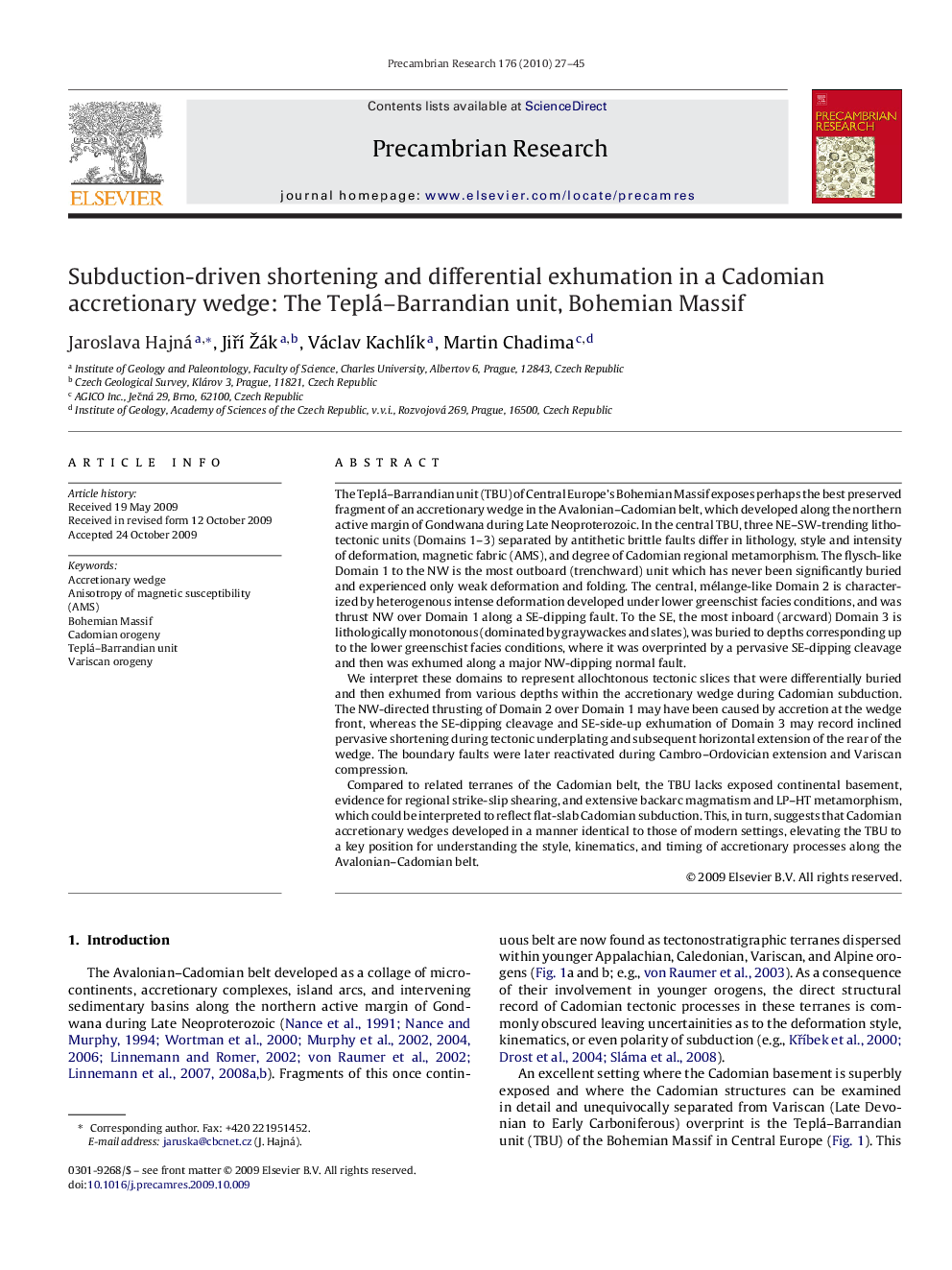| کد مقاله | کد نشریه | سال انتشار | مقاله انگلیسی | نسخه تمام متن |
|---|---|---|---|---|
| 4723965 | 1639683 | 2010 | 19 صفحه PDF | دانلود رایگان |

The Teplá–Barrandian unit (TBU) of Central Europe's Bohemian Massif exposes perhaps the best preserved fragment of an accretionary wedge in the Avalonian–Cadomian belt, which developed along the northern active margin of Gondwana during Late Neoproterozoic. In the central TBU, three NE–SW-trending lithotectonic units (Domains 1–3) separated by antithetic brittle faults differ in lithology, style and intensity of deformation, magnetic fabric (AMS), and degree of Cadomian regional metamorphism. The flysch-like Domain 1 to the NW is the most outboard (trenchward) unit which has never been significantly buried and experienced only weak deformation and folding. The central, mélange-like Domain 2 is characterized by heterogenous intense deformation developed under lower greenschist facies conditions, and was thrust NW over Domain 1 along a SE-dipping fault. To the SE, the most inboard (arcward) Domain 3 is lithologically monotonous (dominated by graywackes and slates), was buried to depths corresponding up to the lower greenschist facies conditions, where it was overprinted by a pervasive SE-dipping cleavage and then was exhumed along a major NW-dipping normal fault.We interpret these domains to represent allochtonous tectonic slices that were differentially buried and then exhumed from various depths within the accretionary wedge during Cadomian subduction. The NW-directed thrusting of Domain 2 over Domain 1 may have been caused by accretion at the wedge front, whereas the SE-dipping cleavage and SE-side-up exhumation of Domain 3 may record inclined pervasive shortening during tectonic underplating and subsequent horizontal extension of the rear of the wedge. The boundary faults were later reactivated during Cambro–Ordovician extension and Variscan compression.Compared to related terranes of the Cadomian belt, the TBU lacks exposed continental basement, evidence for regional strike-slip shearing, and extensive backarc magmatism and LP–HT metamorphism, which could be interpreted to reflect flat-slab Cadomian subduction. This, in turn, suggests that Cadomian accretionary wedges developed in a manner identical to those of modern settings, elevating the TBU to a key position for understanding the style, kinematics, and timing of accretionary processes along the Avalonian–Cadomian belt.
Journal: Precambrian Research - Volume 176, Issues 1–4, January 2010, Pages 27–45